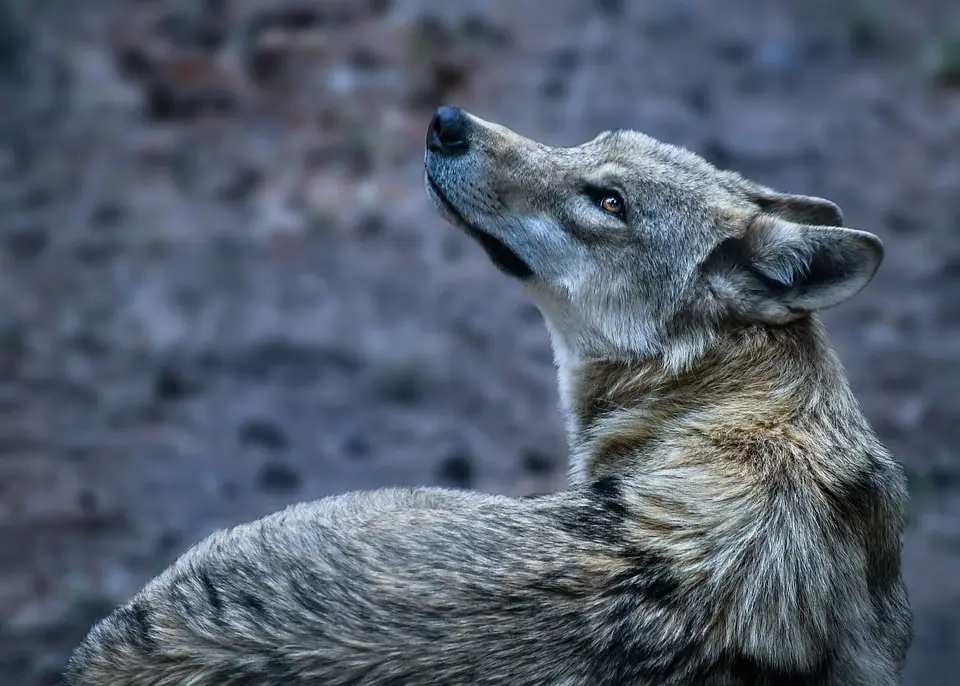Nobody can really talk about mountains and the less inhabited areas of Dalmatia without talking about some rather venomous residents of those areas, and I’m not talking about a local baka armed with the latest gossip about who is getting divorced or who is pregnant.
Snakes (zmija, or zmije if we’re talking in plurals)
Croatia is home to large, potentially dangerous animals like wolves and bears. The ‘big three’ here are wolves, brown bears and lynxes. You’ll likely never see any of them unless you’re deep in the forests of Gorski kotar or Lika, but we just keep on disturbing snakes, and the poor things truly couldn’t want less to do with us if they tried.
Croatian snakes, much like any other snake, prefer to stay as far away from human activity as possible and truly want absolutely nothing whatsoever to do with you. They are not outwardly aggressive, they do not seek confrontation, and contrary to popular (and unfortunate) belief, they do not bite out of ill will.
If cornered, surprised or in fear, they can and will take a swipe at you. If you see a snake, especially a horned viper, make sure to give it a wide berth and show it some respect. You’ll likely get the same back and you’ll both merrily go on your way. Here’s what to do if you find yourself hiking out in the Dalmatian mountains and happen to sit or step on a snake.
Snake bites
There are fourteen known species of snake living in and around Croatia, of which only three are venomous, the horned viper (poskok), the Common European viper/adder (riđovka), and the Meadow viper (planinski zutokrug). Although the distinctive horned viper is slightly more venomous than the Common European viper and the Meadow viper, all three of these snakes are less venomous and as such less dangerous than, for example, African or Asian venomous snakes, and their bite is very rarely fatal.
The horned viper (poskok) is ash-grey in colour and grows up to around one metre in length. The head is heart-shaped, with a characteristic ‘horn’ on the tip of its nose, from which it draws its rather ominous-sounding name. Along the spine of this snake there is a dark winding line that goes from the head all the way down to the tip of the tail and is characteristic of every viper. There are dark spots running along the side of this line. The horned viper lives mainly in the southern, more rugged Croatian regions.
The Common European viper (riđovka) is found throughout Europe. It is about 60 to 80 cm long and also has a zigzag-like line running along its body. There are two species: Vipera berus bosniensis and Vipera pseudoaspis.
If you are bitten by a snake, the most important thing is to determine whether it is venomous or not. Unlike non-venomous snakes, venomous snakes have a triangular head and narrow elliptical eyes. Croatian snakes who are venomous also differ from non-venomous ones in the shape of their bodies, which are short and stocky, in contrast to non-venomous snakes whose bodies are thin and elongated. It should be noted, however, that distinguishing venomous snakes in this way is valid only in Europe and for native European species.
Species from the Viperidae family from North and South America and Asia, such as rattlesnakes, also have a depression between their eyes and nostrils that are used to detect heat. However, European species from the Viperidae family do not have such indentations, so this cannot serve as any sort of criteria for distinguishing venomous and non-venomous snakes in our climate.
When it comes to self-help procedures, it is stated that a bitten individual should absolutely not try to find and seek revenge on the snake. Snakes do not bite out of malice and should not be harmed. Seeking out an irritated or frightened snake again may lead to an additional attack. If the snake is found and killed, which, once again, should absolutely not be done, then it is preferable to bring the body to the hospital with you for accurate identification.
At the bite site, two puncture wounds from the snake’s teeth are usually visible, and they’re around 6-8 mm apart, although it is possible that there is only one wound or even just a small scratch. The finding of a wound doesn’t mean that the venom was injected into the body. According to data, as many as 22% of proven bites have no signs of venom within them.
Symptoms of a snake bite
Pain and swelling appear at the bite site typically occur within two hours. In severe cases and where a lot of venom has entered the body through the wound, the pain appears quickly and is unusually sharp; the swelling also spreads quickly and may be accompanied by severe subcutaneous bleeding. Along with redness, blisters with bloody content may appear on the skin.
Immediately after the bite, almost half of those bitten experience general symptoms such as dizziness, nausea and vomiting, an overall feeling of weakness and swelling of the regional lymph nodes (this can also occur in and around the groin in the case of a bite in the leg, or in the armpit in the case of a bite in the hand). Pale and cold skin, profuse sweating, a rapid heart rate and drop in blood pressure are signs of shock, which generally develops gradually and is the main cause of death.
Snake bite procedures
If the snake you’ve been bitten by is not venomous, the wound should be washed very well with water, smeared with antibiotic ointment and wrapped with a clean bandage. It should be checked when the person who was bitten was last vaccinated against tetanus, and if more than five years have passed, a booster vaccination is required.
If you’ve been bitten by one of the venomous Croatian snakes, the person must remain absolutely still, the slightest of movements should be avoided, and the arm or leg with the bite wound should be immobilised as quickly as possible. Do not try to suck out the venom from the bite site. Any compression of the wound must be performed by specially trained healthcare professionals in extraordinary cases.
It is necessary to take the bitten person to the hospital immediately. In principle, every case of a person being bitten by a snake sees them hospitalised, without thinking too much about whether the snake is venomous or not.
Antidote for snake bites (antiviperinum) comes from horse serum, and contains antibodies that the horse produced after being injected with snake venom. Antiviperinum is given only in hospital conditions intravenously, and only when strictly indicated, since the antiserum itself can cause serious and even life-threatening reactions.
Snake bite prevention
Some snake bites, such as when a person accidentally steps or sits on an unsuspecting and understandably rather disgruntled snake, are almost impossible to prevent. However, there are precautions that can significantly reduce the chance of being bitten by Croatian snakes in summer:
Leave any snake you might come across minding its own business completely alone. Many people get bitten when trying to kill a snake or get as close to it as possible. This is cruel and absolutely not necessary. You are invading the snake’s territory and it, like all animals, should be respected. If you want to take a photo or a video of the snake, do so from further away and use your zoom feature! Snakes usually try to avoid you entirely, and only very rarely do they decide to attack. If a snake bites you, you can almost guarantee that you are the one who has caused it.
Avoid tall grass and plants if you don’t have suitable footwear on (thick leather boots) as Croatian snakes enjoy lying around and hunting their prey there, and use existing paths as much as possible.
Do not put your hands or feet in places that cannot be seen or inspected properly for any potential threat (for example, don’t put your hand in a bush or behind a rock or stone). Do not pick up rocks or pieces of wood unless you are far enough away from a potential snake attack. All of these locations are enjoyed by Croatian snakes, including the horned viper and the Common European viper.
Be especially careful and prepared if you’re into rock and mountain climbing. Croatian snakes are, like all others, cold blooded, and enjoy lying on heated rocks to provide them with energy. They aren’t fans of being disturbed by climbers and hikers.
Dogs and cats (and other animals) are just as susceptible to being fatally harmed by a bite from a venomous snake. If your pet is bitten, take them to an emergency vet immediately for treatment. Do not allow your pet to approach a snake under any circumstance. Curiosity killed the cat, and in this case it will kill the dog too.
Croatian snakes have no interest in you whatsoever, show them the same grace and don’t tempt fate.
Can a bite from a Croatian snake be fatal?
Yes. According to the Croatian Institute of Public Health, over the last twenty years or so, three cases of a snakebite being fatal have been recorded in Croatia, in 2006, 2007 and 2013, they occur sporadically with an average number of cases of 0.2 per year for the analysed period, and the counties in which the cases occurred are Zadar, Split-Dalmatia and Lika-Senj.
Most of the victims who died from bites from Croatian snakes were adults. The absolute number of recorded deaths from this cause is small, so it can only be concluded that cases of deaths caused by Croatian snakes are extremely rare. Men are more often victims of snake bites than women. The most recorded bites were from the Common European viper (riđovka), which is the most widespread venomous snake in Europe.
Sharks (morski pas or morski psi if we’re talking in plurals)
Morski pas translates to sea dog, and it almost makes them seem like they’d be pleasant to meet, doesn’t it? Rest assured, while the Croatian Adriatic is home to many species of shark, including potentially dangerous ones such as the shortfin mako shark, meetings are extremely rare, and attacks are almost without precedent. The last fatal attack occurred in the waters surrounding Omis in 1974. Not the best timing for the release of the iconic Jaws film.
Mako sharks are believed to have been responsible for surprisingly few attacks on humans, despite their frightening looks and even more frightening speed. We are far more dangerous to them than they are to us.
Brown bears (Smeđi medvjed, or smeđi medvjedi if we’re talking in plurals)
Croatia is home to the brown bear. This large, cuddly and rather cumbersome looking animal is in fact not that cuddly and can move more quickly than you. There are around 900-1000 brown bears in Croatia, and most of them live in Central Croatia, including Lika and Gorski kotar, but they can be found further south in the mountains of Mosor and Biokovo in Central Dalmatia. They have also been seen in other parts of the country, with one encounter occurring in the hills above Dubrovnik. You’ll also find them in your pocket, more precisely on the back of a 5 kuna coin.
Brown bears like to stay out of the way of people and rarely attack on sight, but they are known for their ill temper and general lack of patience. They can be unpredictable and will be even more easily triggered if they have cubs. In fact, a female bear (sow) with cubs is one of the most dangerous animals you could run into. These easily disgruntled animals will usually walk away from you, but should that not occur, you should remain perfectly still and not make eye contact with the bear. The bear may stand on its hind legs to get a better look at you, but this isn’t necessarily a show of aggression. If the bear is not approaching you, walk away from it without turning your back on it while speaking in a calm, neutral tone. Never, ever run from a bear.
Never approach a bear. They really will do their best to avoid you but brown bears are aware of their size, weight and speed and aren’t as quick to flee from a perceived threat as other smaller animals are.
If you’re going to be spending time hiking in the more remote areas of the country, especially in Lika or Gorski kotar, carry bear spray with you. It is highly unlikely you’ll come face to face with a bear, but it’s better to be safe than sorry.
If you do see a bear and it makes chuffing noises, sticks out its lips or chatters its teeth, it is trying to warn you that you’re pushing it and getting too close. Back away.
If you want to meet a Croatian brown bear in a much more safe and friendly environment, there is an amazing bear sanctuary called Kuterevo in Lika-Senj County. Founded back in 2002, volunteers help orphaned brown bears live a decent and natural life here, and being able to spend time around them is absolutely worth it. You’ll find the sanctuary in the Otocac Municipality, and it’s a great stop on the way from Zagreb to the coast or vice versa.
Wolves (vuk or vukovi if we’re talking in plurals)
In Croatia, the wolf is permanently present throughout the Dinarides, with the Croatian population mingling with wolves from the border areas of Slovenia, Bosnia and Herzegovina and Montenegro to the south, preying primarily on wild ungulates such as deer, and unfortunately livestock.
The distribution of the Croatian wolf population used to be far greater than it is now, but time and human activity has seen their numbers and their territories dwindle. Today, wolves are distributed across nine different counties: Sisak-Moslavina, Karlovac, Lika-Senj, Primorje-Gorski kotar, Istria, Zadar, Šibenik-Knin, Dubrovnik-Neretva and Split-Dalmatia, and like both bears and snakes, they do their absolute best to stay away from humans and human activity, living in sparsely populated and rural areas from the Dalmatian hinterland to the border with Slovenia. You will likely never see one, unless you’re a farmer or you just have a lot of sheep for some reason.
That brings me to the two realities that wolves face in Croatia. One part of the population adores these stunning, almost ghost-like animals and wants to protect them at all costs, and the other hates them and would prefer they weren’t present at all. It’s true that wolves cause tremendous issues and financial losses for farmers who lose livestock such as sheep to attacks. A hatred of wolves and profit that could be earned by hunting and killing them drove wolf numbers down, and by the 1980s, they remained solely in Lika and Gorski kotar.
Fortunately, their numbers have since recovered and they are protected by law. Despite that, people are sadly still killing wolves.
Wolves are naturally fearful of humans and will typically run away if they see you. That said, there are still some precautions you should take if you do happen to encounter a wolf in Croatia which isn’t so quick to run in the other direction:
Stand tall and make yourself look as large as you possibly can. Calmly but slowly back away from the animal. If the wolf still does not run away from you immediately, continue making yourself large and backing away slowly, avoiding sudden movements. Do not turn your back on the wolf or run away at any point.
The risk of a wolf attack in general is very low, especially in Croatia, and any wolf eyeing you up is more than likely just curious.
Lynx (ris)
Croatia is home to the lynx, and their numbers are desperately dwindling. These gorgeous big cats with their beautiful eyes and fluffy ears look almost magical, and unfortunately their numbers have been driven so low by hunting and habitat encroachment. Croatia currently only has between 40 and 60 lynx living in the wild. Following a severe decline in numbers, some areas of the country have been partially repopulated with this native cat species using individuals imported from Slovakia and Romania. The absolutely stunning Risnjak National Park in Gorski kotar draws its name from these elusive and utterly magnificent cats, and wolves, snakes and bears all live there, too.
There is little to no threat from a lynx. If you do happen to come across one, which is unfortunately extremely unlikely owing to the reasons stated above, face the animal, speak in a firm voice, back away slowly, don’t make any sudden movements, and always leave room for the cat to escape the situation on its own terms. Don’t ever crouch down or attempt to pet a lynx.
For more on Croatian wildlife, make sure to check out our dedicated lifestyle section.











